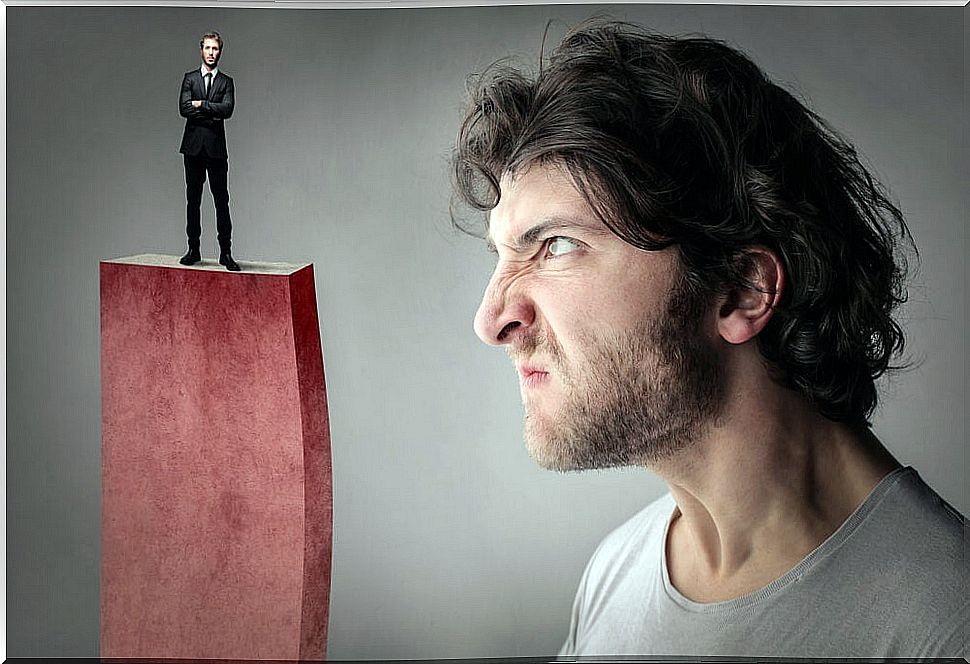What Exactly Is Envy?

We all know envy, a social emotion that we encounter on a daily basis. And despite the fact that in most cases it has a negative connotation, it fulfills important functions. Psychology teaches us that emotions are neither bad nor good (outside of pathological aspects), they can simply be pleasant or unpleasant. In addition, they always serve a function.
Envy in its simplest aspects is represented in a triadic relationship of inequality. This relationship would be made up of two people and an object. And the inequality is generated in the fact that one of those people has the object and the other does not, but wants it. Therefore, we are facing an emotion where social comparison arises.
The social comparison
Human beings live in complex societies, where social status will influence our lives. So it makes sense, from an adaptive point of view, that we worry about our social life. This is where social comparison is born, in an effort to be better positioned and have better social resources.
Social comparison can occur in two ways: (a) ascending, comparing ourselves with people who are / perceive better than us, or (b) descending, comparing ourselves with those who are / perceive worse than us. Each one of them fulfills a function and has its reasons, but for the study of envy we are interested in the bottom-up comparison : we envy those who have something we want.

The ascending social comparison usually aims to identify what differentiates us from the person of higher status, to equal or exceed them. This objective may vary depending on the content of the comparison and the person to be compared. For example, emotions of pride can arise if we compare ourselves with a close person in a way that is not relevant to us.
Envy will play an essential role when trying to equal or exceed the status in that upward comparison. Our motivation will be to achieve that superior status due to the extra social resources that it would provide us with respect to the other person. And to achieve this, envy can act in different ways, which we will address later.
What is envy?
Envy is a painful social emotion in that it is the product of an unequal relationship. As we have mentioned, it is related to social comparisons and the evaluation of our self. Therefore, sometimes we can refer to envy as a social thermometer that allows us to gauge our social status and take action if it is not what we would like.
Although sometimes envy is expressed openly as a sign of admiration (what envy you give me!), It is normal for it to be hidden. In this sense, hiding envy is part of our social protocol. This fulfills two clear functions: on the one hand, it prevents the envious from making his or her lack public, thus protecting himself from a possible devaluation of the self; and the other to prevent the envied person from feeling threatened.
The object of envy can refer to a great variety of elements. It can encompass possessions, but also personal characteristics or accolades. This will acquire its characteristic of object of envy, when it is desired by one person, it does not possess it and identifies it in another. Desire can be largely driven by an attempt to restore a position of inferiority or disadvantage. That is, not because of what the object is, but because of what the object represents.
Now, how can we react when the emotion of envy appears in us? This is where the two types of envious responses come in and their consequences, which we will talk about in the next section.

Types of envy
We can say that there are two main aspects: we could speak of benign envy and evil envy (also known as schadenfreude). Benign envy arises when the envious person feels discomfort for the welfare or success of the other, but does not harbor bad wishes towards him. The behavior that results from this type of envy will be attempts, on the part of the envious, to improve their status. This will be achieved through the acquisition of the object of envy without intervening in the envy.
In the malicious, on the contrary, in addition to the discomfort of success, there are bad desires towards the envied. Therefore, we are no longer going to see improvement behaviors; what will appear will be attempts to depreciate the value of the object of envy, or even attempts to decrease the status of the envied by removing the object.
Both types of envy seek the same thing, the envious wants to have a status equal to or greater than the envied one. In the evil one it would achieve this by reducing the status of the envied, and in the benign by increasing the status of the envious. Although the first has a prosocial character, we must not forget that schadenfreude is also a very present emotion in our lives.
A question to ponder: when we envy another person, what predominates in us, benign envy or schadenfreude?









